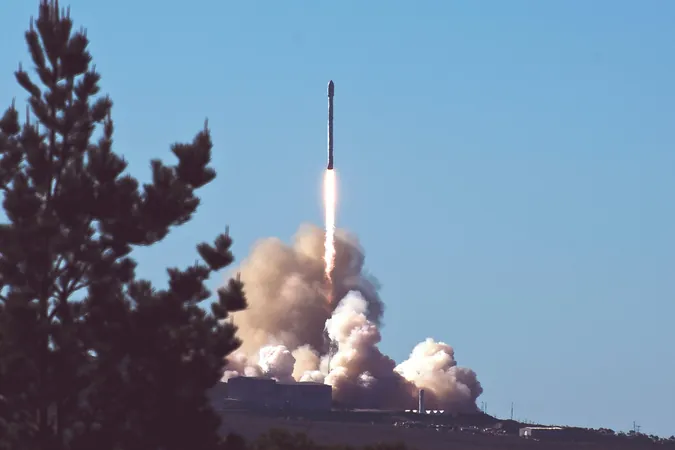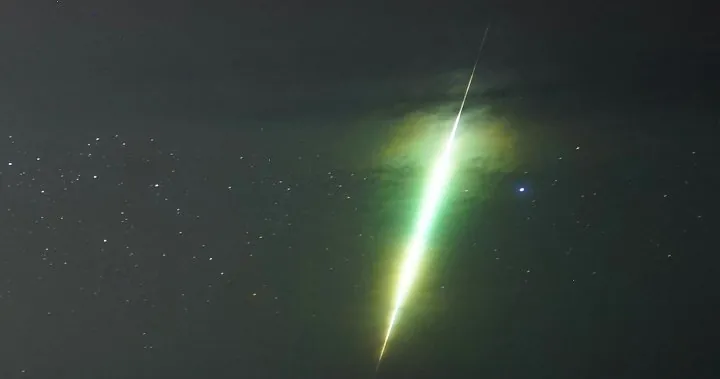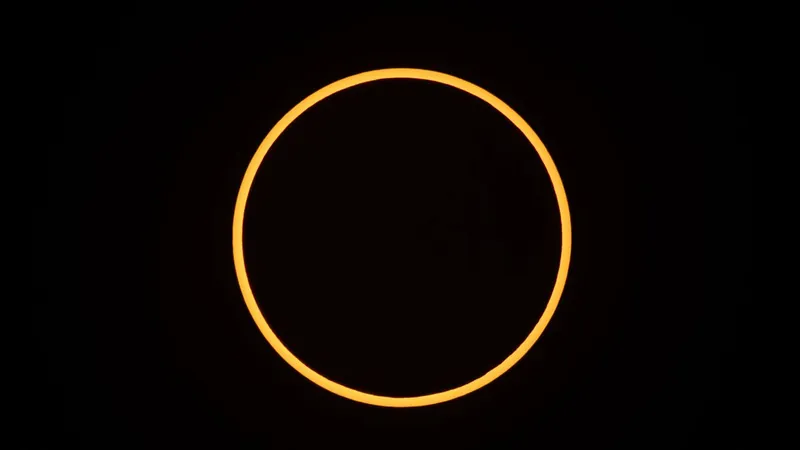
SpaceX Successfully Launches Hera Mission Amid Hurricane Milton Delays
2024-10-08
Author: Jacob
Introduction
SpaceX made headlines on Monday as it successfully launched the Hera probe aboard its Falcon 9 rocket, marking a significant return to flight operations for the company after a brief hiatus. The mission, conducted on behalf of the European Space Agency (ESA), is set to journey towards a binary asteroid system composed of Didymos and its moonlet, Dimorphos. This mission is crucial as it follows NASA's Double Asteroid Redirection Test (DART) conducted in 2021, aiming to deepen our understanding of planetary defense mechanisms.
Launch Details
The launch took place at 10:52 AM from Cape Canaveral Space Force Station's Space Launch Complex 40. Notably, this flight utilized the first-stage booster for the last time—its 23rd flight—having previously been involved in human spaceflight missions including Crew-1 and Crew-2. The ESA’s Hera mission is anticipated to transform preliminary experimentation into a standardized and reliable planetary defense strategy, featuring cutting-edge technologies for autonomous navigation and low-gravity operations.
Weather Challenges and Postponements
However, SpaceX’s successful launch was overshadowed by the simultaneous challenges posed by Hurricane Milton. Originally, the launch of the Europa Clipper mission aboard a Falcon Heavy rocket from Kennedy Space Center was scheduled for later in the week, but it was postponed due to the hurricane threat. Heavy rains and fierce winds are expected as Hurricane Milton approaches Florida's Space Coast, prompting NASA to prioritize safety for its personnel and the spacecraft.
Europa Clipper Mission
NASA's Europa Clipper is a groundbreaking mission designed to explore Jupiter's icy moon Europa, which is believed to harbor conditions suitable for life beneath its surface. The spacecraft, the largest ever constructed for planetary exploration by NASA, will not land but will conduct nearly 50 flybys of Europa to investigate its potential for hosting life. After the tropical storm passes, NASA will assess any damage at the launch facility before determining a new launch window, which extends until November 6.
FAA Investigations and Safety Measures
In a separate but related matter, the Federal Aviation Administration (FAA) had previously grounded Falcon 9 operations following an anomaly during the Crew-9 mission. The crew capsule successfully returned to Earth, but the second stage of the rocket landed outside the designated hazard area, prompting an investigation. While no injuries or property damage were reported, the FAA has emphasized the importance of safety in all commercial space operations.
Looking Ahead
With repeated disruptions affecting launch schedules this year, including a string of groundings for various investigations, SpaceX is eager to resume regular operations once the FAA completes its review of recent mishaps. The attention on safety remains paramount as multiple missions gear up for the future, including potential landings on Mars and expeditions beyond our planetary neighborhood.
Conclusion
SpaceX continues to push the boundaries of commercial space exploration while reinforcing its commitment to safety, exemplified through its proactive measures following the recent incidents. The upcoming months are expected to be exciting for space enthusiasts as the agency gears up for a series of anticipated launches, including the much-awaited Europa Clipper mission. As we venture forth into uncharted territories of the cosmos, the stakes have never been higher for human exploration and planetary protection.









 Brasil (PT)
Brasil (PT)
 Canada (EN)
Canada (EN)
 Chile (ES)
Chile (ES)
 España (ES)
España (ES)
 France (FR)
France (FR)
 Hong Kong (EN)
Hong Kong (EN)
 Italia (IT)
Italia (IT)
 日本 (JA)
日本 (JA)
 Magyarország (HU)
Magyarország (HU)
 Norge (NO)
Norge (NO)
 Polska (PL)
Polska (PL)
 Schweiz (DE)
Schweiz (DE)
 Singapore (EN)
Singapore (EN)
 Sverige (SV)
Sverige (SV)
 Suomi (FI)
Suomi (FI)
 Türkiye (TR)
Türkiye (TR)